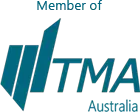Emerging from Covid-19, businesses found themselves battling staff and supply shortages along with higher operating costs. The question was if these were temporary or semi-permanent challenges that required adjustments and rethinking. Quickly, it became increasingly apparent that a persistent inflationary environment is taking root.
The impact of inflation comes at various speeds and requires a functional, disciplined, and adaptable response. Based on our experience, we identified 5 key steps for management to master in 2022 and 2023, to successfully navigate the headwinds, and to emerge on the other side more resilient and profitable.
1. Know Your Numbers – Before they Happen
- Renewed reporting and forecasting structure: Inflation brings high volatility impacting revenue, costs and thus margins. Businesses are required to deploy a renewed reporting and forecasting structure, ideally weekly, to closely monitor and predict changes in levers impacting operations and financials.
- Review contracts based on the new realities: As labour and materials, availability, and costs, are rapidly changing, all contracts must be continuously reassessed, by both the seller and the buyer. We also recommend implementing and monitoring accrual-based, profit and loss accounting. Ideally, this should be weekly and monthly as a minimum, to assess the real profitability early on and avoid surprises. It is an absolute must for business owners and managers to understand and review their financial reports against KPIs.
- Deeper insights of industry trends and competitors: Inflation impacts and changes the competitive landscape across most industries. Management is required to closely monitor their current competitors and keep an eye on emerging ones. Additionally, as inflationary pressures continue and business owners exit, a once-in-a-lifetime opportunity for acquisitions will arise.
2. Proactive Planning and Risk Management – Be a Step Ahead Always
- Proactive end-to-end planning: Different functions in the business are required to actively look forward, try to predict potential changes and plan accordingly. We recommend each business department build a rolling 12-month inflation management plan that is reviewed and updated monthly.
- Business model adaptation speed: Implementing and communicating clear mandates, KPIs and goals, across all departments and business units, is essential to ensure team engagement and desired outcome. Additionally, managers need to quickly assess and adapt business models and resources to ensure meeting the new business realities and customer expectations.
- Supply and demand sides – visibility and risks: Your suppliers and customers are certainly impacted by inflation, and it is important to continuously assess their risks and your inherited risks as a result. High transparency is required with your strategic customers and suppliers. That will certainly provide better visibility and predictability of potential challenges ahead.
3. Be Transparent
- Go beyond price
As business costs increase, adjusting prices is a fundamental and often unpleasant step to take. Management can use this step to build deeper relationships with customers and focus on value beyond price. - Know your customer’s opportunities and challenges on a deeper level. This means targeted and focused account management efforts to understand strategic and operational challenges your customers are facing and how you can support them.
- Data analysis, efficiency and win-win approach: Be creative and always consider mutual success with your customers. Analysis of customer data, revenue and trends will enable you to identify the best solutions for your customers and potential efficiency improvements and cost reduction opportunities.
4. Be Transformative – Focus on Talent
- Investment in technology and process automation: Businesses will need to actively invest in process automation, IT systems and cloud-based infrastructure to reinforce competitive advantage, improve efficiency, optimise business operations and reduce costs.
- Redesign workflow and communication channels: The inflationary market, both the supply and demand side, will be less tolerant to pay for businesses’ inefficiencies and waste. Companies that quickly reassess and optimise their workflows and communication channels, will be able to offer better value and outperform competitors.
- Build a culture of leadership with a focus on talent: Staff shortages and wage pressure will increase mobility and overall wage cost. Additionally, businesses will incur more expenses related to recruitment, training, and opportunity cost. We recommend implementing staff recruitment, training, and retention plan as well as “beyond wage” incentives.
5. Be Decisive – Make Bold Decisions
- Make fast decisions and develop adaptive strategies: Managers, across functions, must be able to predict market changes and very early on develop strategies accordingly. The common mistakes to avoid are having reactive strategies, over strategising and using a “one size fits all” approach. A speedy, adaptable, specific, and documented strategy will likely produce the desired outcome.
- Assess business performance and consider exit: Most managers will face some difficult decisions related to nonperforming products, services, or business units. To rescue a problematic part of the business often requires energy, focus and investment. In our experience, many times, a “shrink-to-grow” strategy can be the best business decision.
- Focus on growth: The volatile business environment brings fear, greed and once- in-a-lifetime opportunities. While navigating risks, businesses must continue focusing on and investing in growth to emerge on the other side, more resilient, competitive, and profitable.






